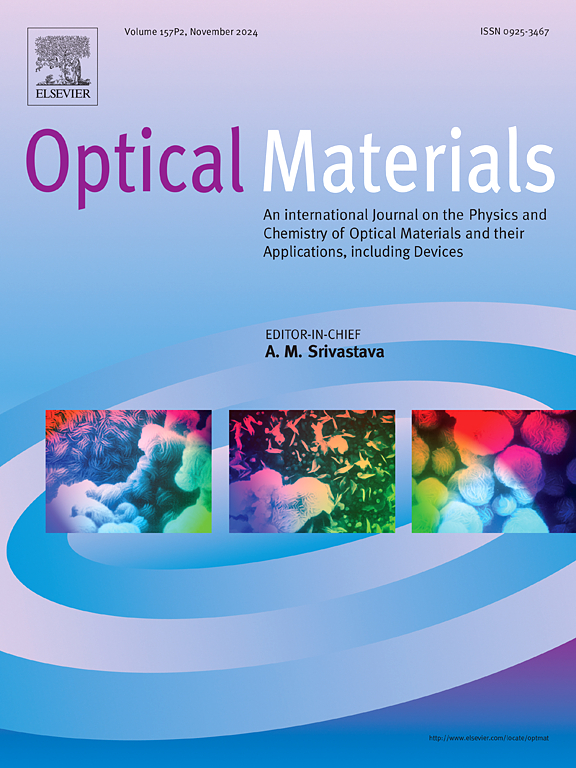Synthesis of colloidal snowflake-like silver nanoparticles and their use for SERS detection of pesticide imidacloprid at trace levels
IF 3.8
3区 材料科学
Q2 MATERIALS SCIENCE, MULTIDISCIPLINARY
引用次数: 0
Abstract
Besides conventional methods, trace concentration detection of molecules can now be performed with the emerging surface-enhanced Raman scattering (SERS) spectroscopy. A key factor in achieving high performance in SERS is the quality of the substrate, which must exhibit a high, uniform and reproducible enhancement factor. Silver nano snowflakes (AgNSFs) meet these criteria effectively. In this report, we present a simple procedure to synthesize uniform colloidal AgNSFs, approximately 2 μm in size, by reducing aqueous silver nitrate with hydroxylamine at room temperature. These AgNSFs were then deposited onto an aluminum foil and dried to create a SERS substrate. The performance of this SERS substrate was first tested using rhodamine 6G (R6G), demonstrating detection capabilities down to a concentration of 10−14 M, with a SERS enhancement factor reached 2.8 × 1011, and a high degree of uniformity and reproducibility (with a relative standard deviation less than 9 %). Additionally, when applied to detect the important pesticide imidacloprid (IMI), the substrate enabled detection at concentrations as low as 0.005 mg/L, with a detection limit of 0.1 μg/L (0.1 ppb). These findings suggest that the AgNSFs synthesized in this study have significant potential for application in SERS measurements, particularly in food safety and environmental monitoring applications.
胶体雪花状银纳米粒子的合成及其在痕量农药吡虫啉 SERS 检测中的应用
除传统方法外,现在还可以利用新兴的表面增强拉曼散射(SERS)光谱法进行分子的痕量浓度检测。实现 SERS 高性能的一个关键因素是基底的质量,它必须表现出高、均匀和可重复的增强因子。纳米银雪花(AgNSFs)能有效满足这些标准。在本报告中,我们介绍了一种简单的方法,即在室温下用羟胺还原硝酸银水溶液,合成大小约为 2 μm 的均匀胶体 AgNSF。然后将这些 AgNSFs 沉积到铝箔上,干燥后制成 SERS 基底。首先使用罗丹明 6G(R6G)对这种 SERS 基底的性能进行了测试,结果表明其检测能力低至 10-14 M 的浓度,SERS 增强因子达到 2.8 × 1011,并且具有高度的均匀性和可重复性(相对标准偏差小于 9%)。此外,当应用该底物检测重要农药吡虫啉(IMI)时,其检测浓度低至 0.005 mg/L,检测限为 0.1 μg/L(0.1 ppb)。这些发现表明,本研究中合成的 AgNSFs 在 SERS 测量中具有巨大的应用潜力,尤其是在食品安全和环境监测应用中。
本文章由计算机程序翻译,如有差异,请以英文原文为准。
求助全文
约1分钟内获得全文
求助全文
来源期刊

Optical Materials
工程技术-材料科学:综合
CiteScore
6.60
自引率
12.80%
发文量
1265
审稿时长
38 days
期刊介绍:
Optical Materials has an open access mirror journal Optical Materials: X, sharing the same aims and scope, editorial team, submission system and rigorous peer review.
The purpose of Optical Materials is to provide a means of communication and technology transfer between researchers who are interested in materials for potential device applications. The journal publishes original papers and review articles on the design, synthesis, characterisation and applications of optical materials.
OPTICAL MATERIALS focuses on:
• Optical Properties of Material Systems;
• The Materials Aspects of Optical Phenomena;
• The Materials Aspects of Devices and Applications.
Authors can submit separate research elements describing their data to Data in Brief and methods to Methods X.
 求助内容:
求助内容: 应助结果提醒方式:
应助结果提醒方式:


